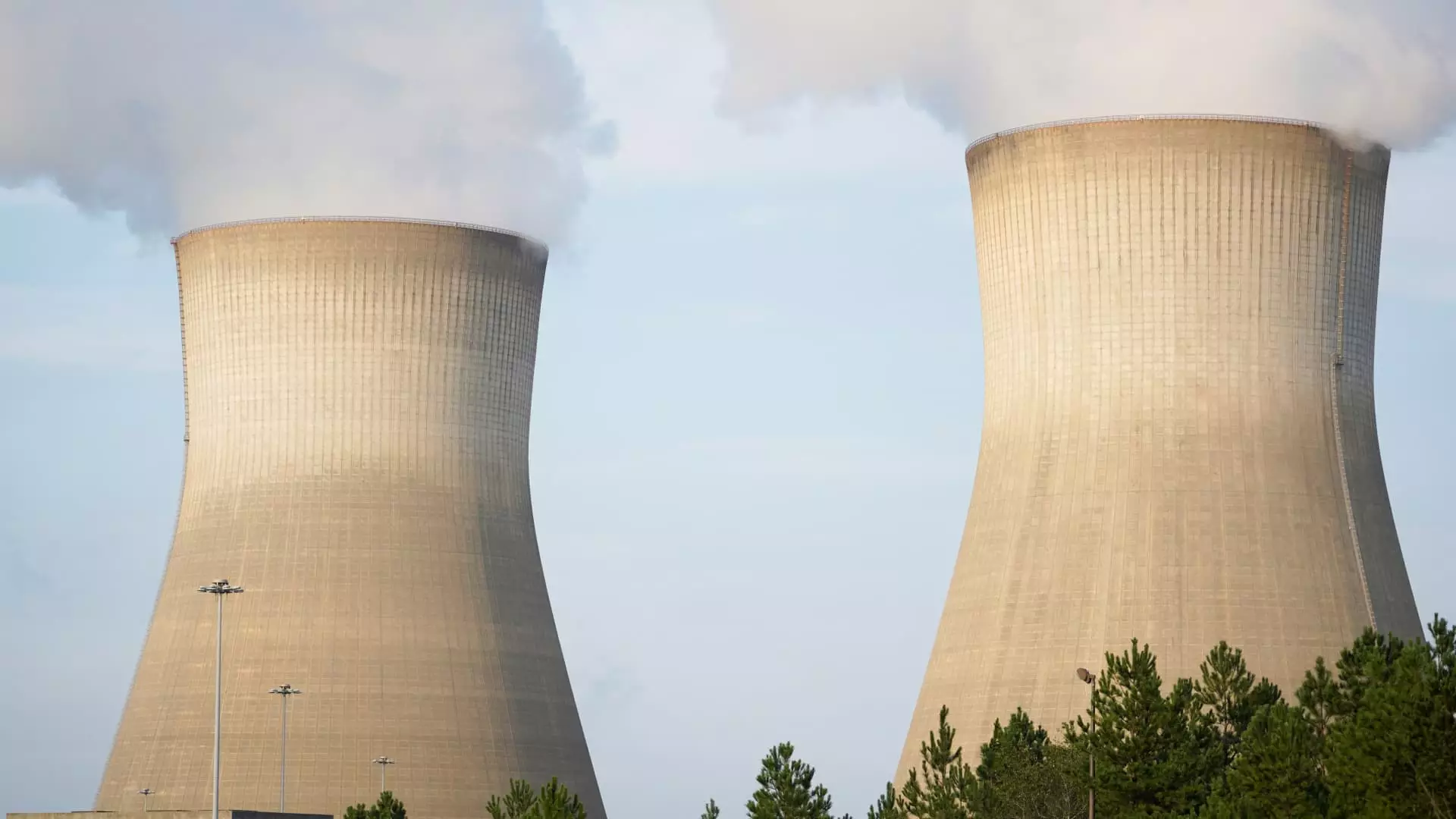The recent surge in nuclear power stocks can be attributed to President Donald Trump’s bold executive orders aimed at restructuring the Nuclear Regulatory Commission (NRC) and expediting the deployment of new reactors across the United States. The significant price jumps seen in companies like Oklo and NuScale — soaring by over 27% and 18%, respectively — signal a notable shift in investor sentiment favoring nuclear advancements. Overall, this shift underscores a growing recognition of nuclear energy’s potential as a critical component of America’s energy strategy, especially in an era when the threat of climate change looms large.
The centerpiece of Trump’s orders is a focus on smaller, advanced reactors. This decision, championed by various industry insiders, reflects a crucial transformation in the narrative surrounding nuclear energy. While larger plants have long been the norm, the push towards modular systems promises a more flexible and economically viable approach to nuclear energy. By inviting greater participation and innovation in this sector, the administration’s approach could revitalize the industry’s image and open it to a broader acceptance among a public often skeptical about nuclear power.
Regulatory Overhaul: A Double-Edged Sword
While some view the expedited licensing timeline of 18 months for nuclear applications as a necessary step towards modernization, it raises concerns regarding the adequacy of regulatory scrutiny. Critics argue that hastily passed measures might sacrifice safety and thorough assessment in favor of rapid deployment, creating potential risks that could detrimentally affect public trust in nuclear energy. The NRC’s integrity hinges on its ability to maintain stringent oversight while simultaneously promoting innovation. This delicate balance must be navigated carefully to avoid the pitfalls of past nuclear catastrophes that have tarnished the industry’s reputation.
Moreover, the executive orders are not just limited to reactor deployment. They signal a renewed commitment to expanding uranium mining and enrichment capacity domestically. Companies like Cameco Corp., with a rise of over 10%, stand to benefit significantly from these changes. Nevertheless, there’s a growing urgency for transparency in how these initiatives interact with environmental regulations and sustainability. The push for increased domestic uranium production must be tempered with a commitment to safe and responsible mining practices to avoid history repeating itself with environmental disasters.
Big Plants vs. Small Modules: The Future of Nuclear
Trump’s mention of continuing support for large nuclear plants amidst a push for smaller modular reactors creates an intriguing dichotomy. On one hand, large-scale plants have the operational history and capacity to provide substantial power supplies. On the other hand, small modular reactors offer enhanced safety features, scalability, and flexibility, making them attractive options for diverse energy demands. The coexistence of these two paths could spark a renaissance in nuclear development; however, it can also lead to policy fragmentation that complicates the regulatory landscape.
In this climate of transformation, industry leaders must closely examine how these regulatory shifts affect investments and public perception. The presence of key stakeholders like Constellation Energy’s CEO Joe Dominguez and Oklo’s Jacob DeWitte during the signing ceremony illustrates a complex interplay between government policy and corporate interest. Their support is critical, but they must also advocate for responsible development practices that prioritize safety, sustainability, and community engagement.
As the nuclear industry embarks on this new chapter, the stakes are high. Investors and policymakers alike must tread cautiously to ensure the momentum gained does not overshadow the industry’s longstanding commitment to safety and environmental responsibility. The future success of nuclear power in the U.S. lies not only in technological advancements but also in the comprehensive frameworks established to address the societal concerns that have historically dogged this energy source.

